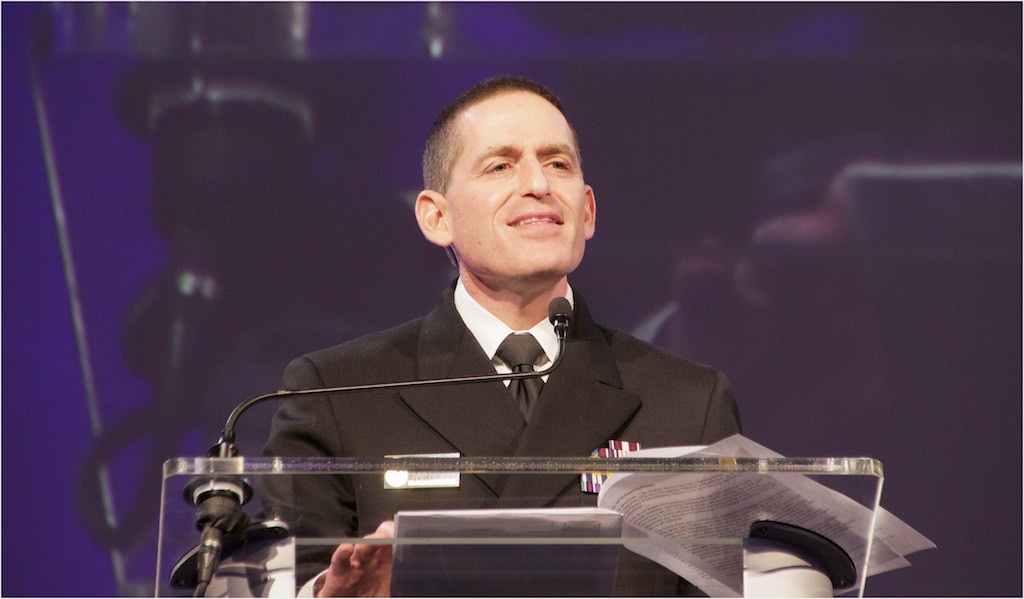
PrEP: From Agreement to Action
Jonathan Mermin, MD, MPH and Dawn K. Smith, MD, MS, MPH
National Center for HIV/AIDS, Viral Hepatitis, STD, and TB Prevention (NCHHSTP), CDC

Dr. Jonathan Mermin at NHPC 2015
“The science has spoken… There can now be no excuse for inaction.”
At last week’s National HIV Prevention Conference in Atlanta, many participants were in agreement with this call to action from Dr. Anthony Fauci, director of the National Institute of Allergy and Infectious Diseases at the NIH. The evidence is clear that antiretroviral medicine is safe and effective for HIV treatment and prevention. Taken by people without HIV – pre-exposure prophylaxis (PrEP) – antiretroviral medicines can greatly reduce their risk of infection.
Indeed, PrEP was everywhere at the conference, from 1,188 occurrences in the abstract book to being highlighted by Douglas Brooks, the Director of the Office of National AIDS Policy, as a key strategy in achieving the 2020 goals of the National HIV/AIDS Strategy. PrEP is a game changer.
At the conference, multiple studies showed a substantial increase in awareness of PrEP and willingness to either use or prescribe it. For example, CDC reported the results of a web-based survey of more than 3,000 gay and bisexual men aged 18-64, with the majority living in cities with high HIV prevalence. The authors found that overall, knowledge of PrEP was high (71%) in 2015 and that gay and bisexual men aged 25-44 were most likely to know about it, but only 7% had ever used it. Men who thought they were at risk for HIV were 57% more likely to use PrEP than those who did not perceive such a risk; and men who engaged in high-risk behaviors, such as recent anal sex without a condom or being in a sexual relationship with an HIV-positive partner, were 82% more likely to use PrEP than those who did not. There are challenges, as gay and bisexual men aged 18-24 were least likely to know about PrEP and yet may be at high risk for HIV infection.
PrEP’s effectiveness is gaining traction among health care providers, even though more need to know about it. According to a CDC study of 1,500 clinicians (per year), only 24% were aware of PrEP in 2009 but this climbed to 64% in 2015. Clinicians surveyed over the six- year period were most willing to provide PrEP for the uninfected partner in an HIV discordant couple (79%), followed by MSM (65%) and people who inject drugs (62%). OB/GYNs were slightly more willing than family physicians to prescribe PrEP, as were clinicians in a group practice compared to a solo practice. Clinicians demonstrated greater willingness to prescribe PrEP once they were given accurate information about it and indications for its use.
There were also multiple presentations at the conference on clinical and pharmacy-based models for identifying and linking persons at risk to PrEP, identifying people who would potentially benefit and providing PrEP at STD clinics, and delivering PrEP as part of community health care services in cities across the US. It is gratifying to see the HIV community embrace the promise of PrEP and make tangible progress toward implementing it in a relatively short time.
CDC maintains PrEP resources on its PrEP website, which includes a fact sheet for health care providers and a recently released brochure, “Talk to Your Doctor about PrEP”, and CDC’s recent Vital Signs on PrEP. Another resource is the US Public Health Service PrEP clinical practice guidelines. Stay tuned for additional program activities, such as outcomes from recent prevention programs to reach individuals who could benefit from PrEP and to increase the number of providers knowledgeable and capable of offering PrEP to gay and bisexual men and transgender persons at high risk for HIV infection.

